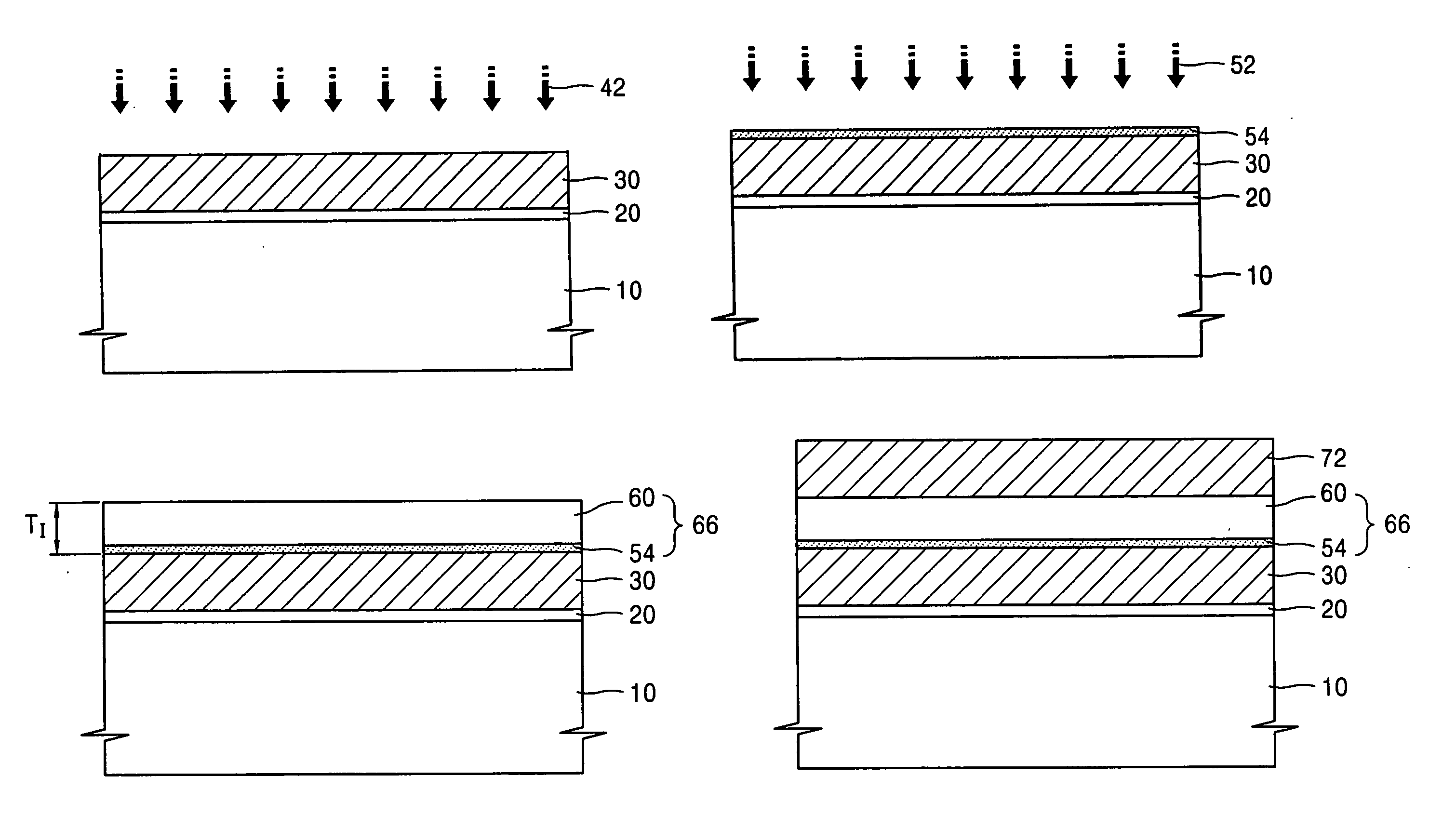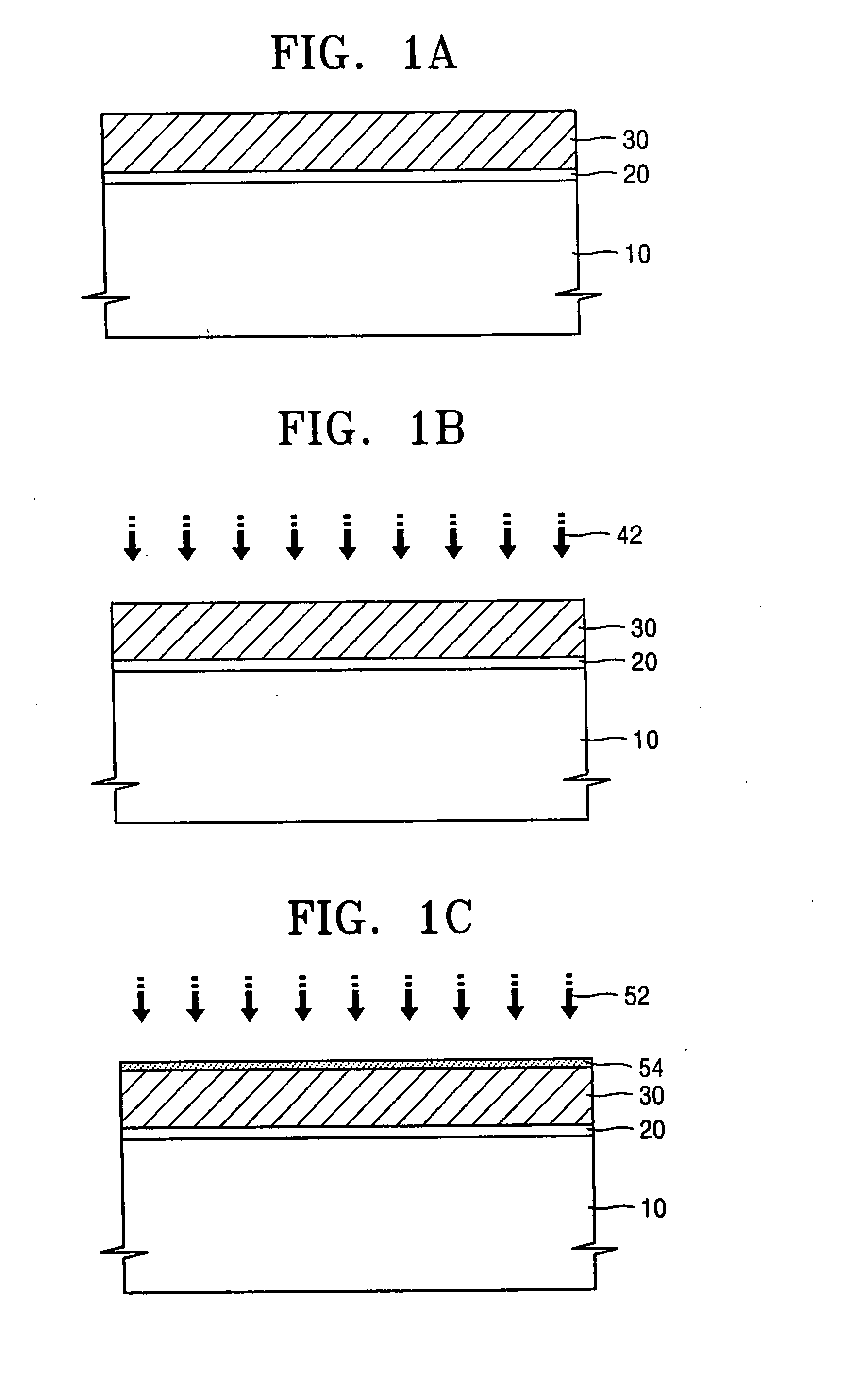Method of manufacturing a thin dielectric layer using a heat treatment and a semiconductor device formed using the method
a technology of heat treatment and semiconductor devices, which is applied in the direction of semiconductor devices, electrical equipment, basic electric elements, etc., can solve the problems of high programming voltage, increase manufacturing costs, and increase the size of the thick layer, so as to reduce the size of the transistor and the resulting storage cell, the effect of increasing the capacitance coupling
- Summary
- Abstract
- Description
- Claims
- Application Information
AI Technical Summary
Benefits of technology
Problems solved by technology
Method used
Image
Examples
Embodiment Construction
[0028] In the following description of preferred embodiments of the present invention and in the claims that follow, the term “on”, when referring to layers of material used in the fabrication of semiconductor devices, refers to a layer that is directly applied to an underlying layer, or refers to a layer that is above an underlying layer with an optional intermediate layer or layers therebetween. The thicknesses of the respective layers are not necessarily to scale in the drawings, but instead are exaggerated for clarity and to illustrate the various features of the present invention.
[0029]FIGS. 1A-1F are cross-sectional views of the fabrication of a semiconductor device in accordance with an embodiment of the present invention.
[0030] In FIG. 1A, a gate insulating layer 20 is formed to a thickness of 100 Å on a semiconductor substrate 10. In one embodiment, the semiconductor substrate comprises silicon material and the gate insulating layer comprises SiO2, or “oxide”.
[0031] A fi...
PUM
 Login to View More
Login to View More Abstract
Description
Claims
Application Information
 Login to View More
Login to View More - R&D
- Intellectual Property
- Life Sciences
- Materials
- Tech Scout
- Unparalleled Data Quality
- Higher Quality Content
- 60% Fewer Hallucinations
Browse by: Latest US Patents, China's latest patents, Technical Efficacy Thesaurus, Application Domain, Technology Topic, Popular Technical Reports.
© 2025 PatSnap. All rights reserved.Legal|Privacy policy|Modern Slavery Act Transparency Statement|Sitemap|About US| Contact US: help@patsnap.com



